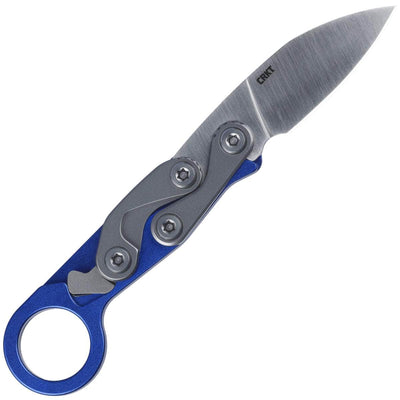Your cart is empty.
Hunting Knife Characteristics
Ever wondered what makes up the perfect hunting knife? Wonder no more.
We've broken down some of the key component of hunting knives to help you make an informed decision about your next purchase. With the right information, you can feel confident in your choice because when you're out in the field stalking a buck, the last thing you want to worry about is your knife.
Hunting or sporting knives are broken into two main parts -- blade and handle. Each of these parts contains a number of components.

The Blade
Point ‐ This is the tip of the knife. There are several main types like clip point, tanto, and drop point, but a gut hook is very common on hunting knives. Its purpose is to split the skin of an animal when gutting and field dressing. It is used by hooking it over the skin and fascia, and pulling along to sever it. Check out our article on the various blade points.
Grind ‐ Sometimes called a bevel, the grind is the part of the blade where the knife tapers toward the cutting edge. The more severe the angle of the grind, the sharper the blade.
Spine ‐ The back of the knife blade. If you're looking for a hunting knife with a lot of strength, find a knife with a thick spine.
Choil ‐ The choil is the unsharpened section of the blade in front of the bolster. It is often used to get a grip on the knife when doing intricate work. When shopping for a hunting knife, look for one with a choil that matches the size of your fingers.
The Handle
Bolster ‐ The bolster is a useful aspect of the handle because it prevents your fingers from slipping over the blade during rigorous use. This may be optional, depending on your comfort with knives.
Finger Groove ‐ This describes the styling that is carved into the knife handle for a better grip. Similar to the choil, you should look for a hunting knife that has a groove that fits the size of your hand.
Tang ‐ This is the part of the knife where the blade stops and the handle begins. The strength of hunting or sporting knives, in addition to the spine, also depends on the tang. The strongest hunting knife has a full tang, which means it is made of one piece of steel that runs from the blade down to the bottom of the handle.
Butt ‐ This is the bottom or rear end of the knife. In this area, you could have things like a rear bolster or pommel. It prevents your fingers from slipping down the blade during use.
Arm yourself with knowledge and you'll streamline the purchasing process and make decisions that will lead to you owning better, higher-quality knives.



















